Ryan Hall's Blog, page 334
October 21, 2015
Hip Adductors: The Root of Your Injuries?
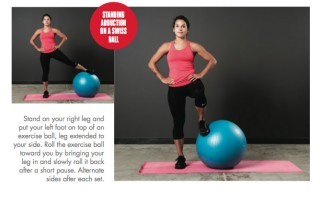
This piece first appeared on Triathlete.
Are you prone to knee injuries? Weak hip adductors might be to blame. “These inner-thigh muscles are very important for a lot of different athletic motions, but one of the key functions of these muscles during swimming, biking and running is stabilizing the pelvis and knee,” says Kevin Laudner, Ph.D., a certified athletic trainer and professor of kinesiology at Illinois State University. “When working in concert with other muscles, the adductors keep the hips and knees balanced, creating a natural alignment during these athletic motions.”
Weakness in hip adductor muscles can cause changes in biomechanics, resulting in decreased athletic performance and increased risk of injury. Strengthening these muscles, however, is not complicated. In a recent study published in The Journal of Sport Rehabilitation, Laudner and colleagues identified some simple exercises to best activate the hip adductors.
“Our study showed that these exercises produced the highest levels of muscle activation, so you know you are getting the most out of your adductors,” Laudner says.
For ideal results, he suggests athletes perform the below exercises in three sets of 12–15 repetitions, 2–3 times per week.
Are your hip adductors in balance? Two simple tests to find out:
– Lie on the floor on your side, placing weight on your hip. Move the opposite (upper) hip and leg so it is resting behind the lower leg. Lift the lower leg off of the floor. If this is easy and doesn’t cause any pain try to add some resistance with a resistance band, ankle weight, or force applied by a friend. Repeat on opposite side. The amount of strength noted should be equal.
– Squats can also be a telltale sign of hip adductor weakness, says Laudner: “If your knees point outward during a squat then there could be an imbalance of hip strength with your hip adductors being weaker than the reciprocal hip muscles (hip abductors).”
Photo Gallery
1 of {count}
Back to Start
View Larger Image
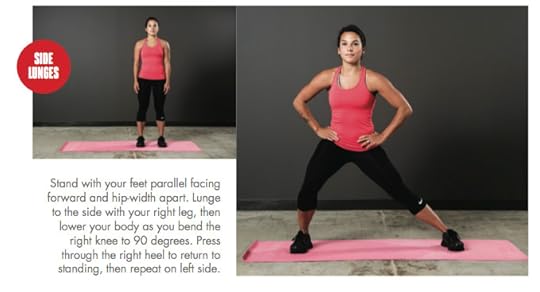
Side Lunges
Photos: John David Becker
View Larger Image
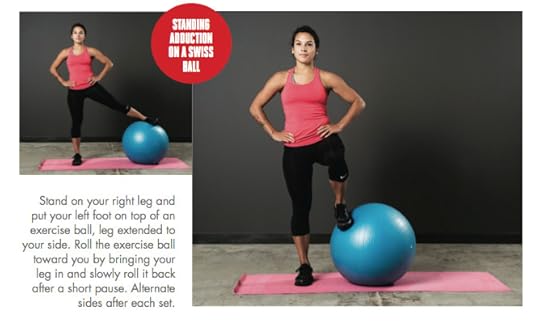
Standing Adduction on a Swiss Ball
Photos: John David Becker
View Larger Image
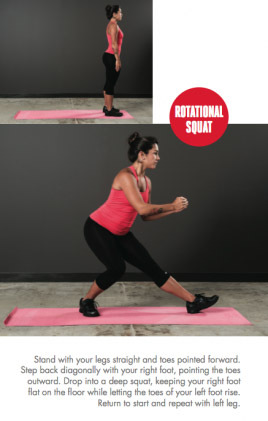
Rotational Squat
Photos: John David Becker
View Larger Image
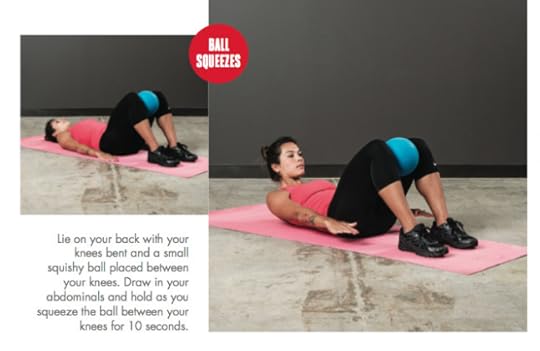
Ball Squeezes
Photos: John David Becker
View Larger Image
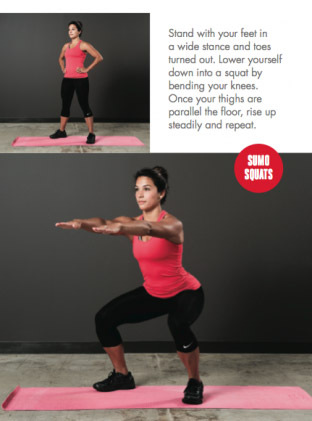
Sumo Squats
Photos: John David Becker
Related Galleries

3 Exercises to Build a Better Butt
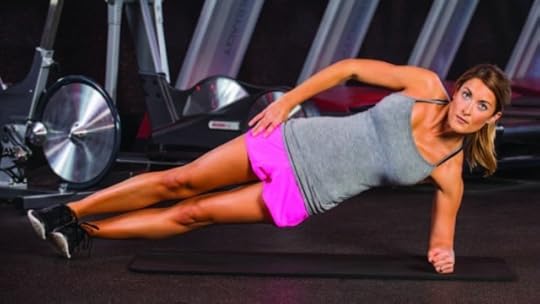
A Pre-Run Core Workout Using Body Weight

Strength Training for Runners: Weighted Lunges
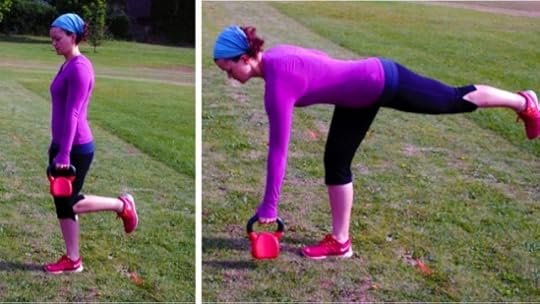
5 Kettlebell Exercises for Runners

More Galleries
The post Hip Adductors: The Root of Your Injuries? appeared first on Competitor.com.
Gebrselassie, Loroupe, Radcliffe and Tergat To Be Inducted Into NYRR Hall of Fame
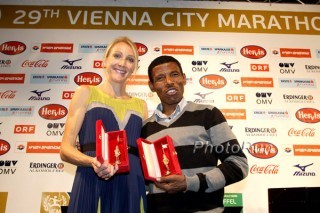
Paula Radcliffe, left, and Haile Gebrselassie are two of the athletes being inducted into this year's NYRR Hall of Fame. Photo: PhotoRun.net
Marathon greats Haile Gebrselassie, Tegla Loroupe, Paula Radcliffe and Paul Tergat will be inducted into the New York Road Runners Hall of Fame, Class of 2015, with Gebrselassie also receiving the 2015 Abebe Bikila Award, and award-winning running journalist Marc Bloom receiving the 2015 George A. Hirsch Journalism Award, it was announced today by New York Road Runners.
All five award winners will be honored at the 2015 NYRR Hall of Fame Induction Ceremony and Abebe Bikila and George A. Hirsch Journalism Award Presentations on Thursday, October 29 at the TCS New York City Marathon Pavilion in Central Park.
“New York Road Runners and those involved in the sport of distance running are incredibly fortunate to have witnessed the stellar performances and contributions of Paula, Tegla, Paul, and Haile throughout their careers,” said Peter Ciaccia, president of events for NYRR and race director of the TCS New York City Marathon. “Their record-setting and medal-winning runs raised the sport to new heights, and they have selflessly used their leadership in the sport as a positive platform for change and inspiring people of all ages and abilities to improve their lives through running.”
For his outstanding contributions to the sport of distance running, both on and off the race course, Gebrselassie will also be the 2015 recipient of the Abebe Bikila Award.
Gebrselassie—who has held world records from 2,000 meters through the marathon—has established himself as a successful businessman and a mentor to young runners via the G4S 4teen program, which brings together young athletes from all over the world to work toward the goal of winning a gold medal at the Olympic Games. The award is named for the legendary 1960 and 1964 Olympic marathon champion from Ethiopia and has been presented annually by New York Road Runners since 1978. Past recipients include Grete Waitz, Fred Lebow, Bill Rodgers, Allan Steinfeld, Paul Tergat, Germán Silva, and the 2014 recipient, Dr. Norbert Sander.
“We are very pleased to present Haile with this year’s Abebe Bikila Award, acknowledging a career of superb athletic and humanitarian achievements,” said Michael Capiraso, president and CEO of NYRR. “Haile mirrors the athletic talent and integrity of Abebe Bikila, attaining the highest accolades in distance running and giving back to the sport and his home country equally as much. From helping kids in the G4S 4teen program achieve their Olympic dreams, to providing hundreds of people in Ethiopia with jobs through his personal business ventures, Haile has transcended the role of an athlete and become an international philanthropist.”
Also on Tuesday, AKTIV Against Cancer announced that Mary Wittenberg, Global CEO of Virgin Sport and former CEO of the NYRR, will be the first recipient of the AKTIV Against Cancer Award, which will be presented at a ceremony on October 27 at The Blue Water Grill in New York City as part of the Foundation’s first-ever North American fundraising luncheon. George Hirsch, Chairman of New York Road Runners (NYRR) will present Wittenberg, the former president and CEO of the NYRR, with the award.
“I am honored to accept this award on behalf of all the millions of people Grete impacted around the world through her running and her philanthropic work,” Wittenberg said. “Grete’s spirit lives on through the AKTIV Against Cancer foundation and the generations of runners and cancer survivors she has inspired.”
The post Gebrselassie, Loroupe, Radcliffe and Tergat To Be Inducted Into NYRR Hall of Fame appeared first on Competitor.com.
How ‘Perception of Effort’ Can Make or Break a Race
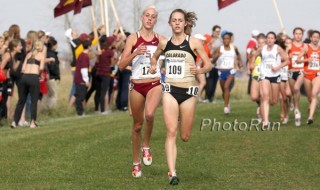
Jenny Barringer was in front at the 2009 NCAA Cross Country Championships for a while. Photo: PhotoRun.net
Adapted from How Bad Do You Want It? Mastering the Psychology of Mind over Muscle by Matt Fitzgerald with permission of VeloPress. Learn more at www.velopress.com/howbad.
Jenny Barringer (now Simpson) was the best college runner in the nation in 2009, maybe of all-time.
So before her final meet, the 2009 NCAA Cross Country Championships, Sean McKeon of Competitor was merely stating a fact when he wrote, “If she doesn’t win, it will be the biggest upset in NCAA history, bar none.” He was also right—more right than he knew—to add that nothing short of an “epic collapse” would prevent her from winning the title she coveted.
But something happened. Barringer was leading halfway through the race yet was unable to drop Susan Kuijken of Florida State, Kendra Schaff of Washington or Angela Bizzarri of Illinois.
At the midpoint of the race, Kuijken noticed that she no longer felt Jenny pulling her along. In fact, she was coasting a bit, running slightly slower than she might be if she were alone. So she put a little more juice in her stride and immediately drew even with Jenny, who flinchingly sped up to reassert a half-step advantage. Moments later, Kuijken was again crowding Jenny from the back, getting increasingly antsy.
Jenny’s head began to bob. It was subtle at first, then not so subtle. The bob turned into a wobble. The wobble descended into her shoulders, trunk, and hips, until Jenny was lurching like a swollen-eyed prizefighter fumbling for his corner. Her speed dropped precipitously and Kuijken pranced away, hardly believing her luck. Jenny now appeared to be speaking to herself, her mouth making sloppy movements as she stumbled ahead. Her eyelids drooped to half-mast.
Kendra Schaff, Angela Bizzarri, and Sheila Reid of Villanova passed Jenny in a merciless single file. Seconds later, the main field caught her.
Jenny was a lost calf caught in a stampede of angry steer. She dropped to 10th place, 20th, 30th. Jenny’s former high school rival Erin Bedell, now a senior at Baylor, came upon her and was moved to help.
“Run with me!” Bedell called.
The greatest female college runner in history crossed the finish line 163rd in her last collegiate race.
The 2009 NCAA Cross Country Championships were covered live on the Versus cable television network. A camera crew awaited Jenny Barringer 30 feet beyond the finish line. She was still recovering her breath when reporter Cat Andersen stuck a microphone in her face and asked her what had happened.
“I didn’t feel so good halfway into it,” she answered tearfully.
The next day, Jenny recorded a 24-minute video interview for Flotrack from her hotel room in Terre Haute. Very little was added to her understated first explanation of the meltdown.
“It was a wave,” she said. “It was all of a sudden: ‘I don’t know if I can run. I don’t know if I can stand up.’”
More revealing, perhaps, than what Jenny did say about her unraveling was what she did not say. She did not say that she had pulled a hamstring, or suffered an asthma attack, or was struck by an agonizing abdominal cramp caused by a floating rib jabbing her diaphragm (which is what happened to Susan Kuijken, who finished in third place). Rather, Jenny’s terse description of her implosion seemed to suggest she had been brought down not by anything physical but by a feeling.
Is this explanation even plausible? According to the psychobiological model of endurance performance, it is.
The post How ‘Perception of Effort’ Can Make or Break a Race appeared first on Competitor.com.
October 20, 2015
18 November/December Races to Sign Up For
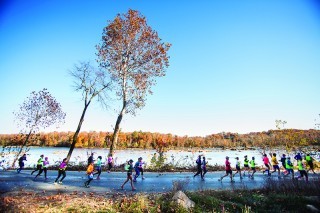
Richmond Marathon, Photo: Courtesy of Richmond Marathon
Marathon season is in full swing, with plenty of races to test your summer training. Even if you’re not running 26.2 miles, you’ll find lots of races in this month’s race guide to enjoy in cooler fall temperatures. Depending on where you live, it might be your last chance to shine before winter no matter the mileage. Pick an event and go get your race on!
Marathon/Half Marathon
Santa Clarita Marathon
Nov. 8; Santa Clarita, Calif.
This year marks the 20th anniversary of the Santa Clarita Marathon, which also features a half marathon, marathon relay and 5K. The Southern California race is a Boston qualifier, and this year it will feature a very flat course on the newly opened trails along the San Francisquito Creek. If you’re looking for a BQ for 2017, this is a good one.
Outer Banks Marathon
Nov. 8; Nags Head, N.C.
This 10th annual event is held on the narrow islands off the coast of North Carolina, perhaps best known as the home of the Wright brothers’ first flight. Runners can now appreciate the wind at their backs in this point-to-point course that generally draws rave reviews. Choose from the full or the Southern Fried Half Marathon—and save room for some post-race North Carolina barbecue.
Richmond Marathon
Nov. 14; Richmond, Va.
This race describes itself as “America’s Friendliest Marathon,” and it’s tough to find runners who disagree with the assessment, particularly with the race’s junk food and wet-washcloth aid stations. The marathon (plus a half and an 8K) features a scenic course through historic Richmond neighborhoods and includes a great post-race party with hot pizza and cold beer.
Rock ‘n’ Roll Las Vegas Marathon
Nov. 15; Las Vegas
Join one of running’s biggest parties of the year as the Rock ‘n’ Roll Marathon series takes its annual trip down the Vegas strip at night. The weekend features a three-day health and fitness expo, a 5K, marathon and half marathon. You can even elope Vegas-style at the “run-thru wedding.” After the race, enjoy a concert from headliner Kid Rock.
Seattle Marathon and Half
Nov. 29; Seattle
In 1970, the Seattle Marathon began with 38 entrants. There’s a bit more competition this year, as the annual event now draws 15,000 runners to the marathon and half marathon. The race features a scenic course with rolling hills that provide views of downtown Seattle and Lake Washington
Honolulu Marathon
Dec. 13; Honolulu, Hawaii
As if you needed an excuse to visit Hawaii, the Honolulu Marathon has grown into one of the world’s biggest and most-respected races. More than 30,000 runners will toe the start line at 5 a.m. Arrive early for the Friday luau, which puts most carbo-load parties to shame.
The post 18 November/December Races to Sign Up For appeared first on Competitor.com.
Why Ankle Injuries Can Have Long-Lasting Effects

The first time I sprained my ankle, it was quickly followed by a stress fracture and weeks of hobbling around. And for months after it finally healed, while swearing that everything was better, it seemed like I could constantly feel new injuries coming on—weaknesses I was susceptible to because of that ankle.
It turns out I wasn’t imagining things.
Though many of us have been taught that you can shake off a twisted ankle, that’s not really true. Studies are now finding that the ankle is, quite literally, the foundation of an athlete. An injury to your ankle can have long-lasting consequences.
“What we’re realizing is it’s a much more serious injury,” says Mike Turner, an associate professor at University of North Carolina, Charlotte. Turner and his wife, Tricia Hubbard-Turner, have authored a number of recent studies on the long-lasting effects of ankle injuries.
“It’s not a one-off. There are significant consequences,” adds Tim McGuine, a senior scientist at the University of Wisconsin School of Medicine and Public Health. A study of college-age athletes who had suffered multiple ankle sprains in the past found that they were markedly less physically active than their peers, even taking fewer steps over the course over a day. It’s almost like their brains simply didn’t want to over-stress those historically hurt ankles.
The issue is two-fold. We’re only starting to understand the long-term consequences of these mobility-impacting injuries, says McGuine. Similar effects are being seen with recurring knee issues and their long-lasting impacts. The second problem is that the ankle is so fundamental to the entire body’s operation, especially in running. It’s weight-bearing, and the constant force on your ankle makes it hard for the joint to heal. That’s why Turner and his wife have made the ankle a focus of so much study. “She would say the ankle’s the most important joint in the body,” he admits.
RELATED: 6 Injury-Reducing Exercises For Runners
According to Turner, even after ankle injuries start to heal, your brain begins to re-wire neurally and your body compensates in ways you may or may not realize. “You end up running differently, walking differently,” he explains. Video analysis has shown those changes can be fairly significant.
It doesn’t take a ton of research to realize an ankle injury can result in a whole new set of injuries. Researchers are finding that even these “small” injuries—ankle sprains, twists, fractures—can result in significant drops in a person’s quality of life even a year later, per all measures on standard surveys. People find that it’s slightly harder to walk up stairs or do activities that require ankle mobility. Subconsciously, they even avoid things that might cause another twisted ankle.
That’s because a twisted ankle isn’t as small an injury as we may think.
When you badly roll your ankle or sprain it, you’re essentially tearing or stretching the ligaments, which causes scar tissue to form, says McGuine. Scar tissue, in turn, affects your mechanics and functionality. Different studies have found re-injury rates between 40 and 70 percent, and many people struggle with long-term ankle instability for months or even years.
But, says Turner, it’s not yet clear what makes someone more prone to long-term ankle instability or even to ankle sprains in the first place. The vast majority of sprains are caused by people rolling their ankles out—as opposed to in—and very few ankle injuries are actual bone fractures.
What is clear is what you can do about it once it happens. Let it heal, says Turner, as in, don’t try to shake it off or run through it. Go to a sports-focused physical therapist or doctor who can watch how your whole mechanical chain works and make recommendations, says McGuine.
There are also a number of exercises that have been shown to improve ankle strength and mobility. The problem, however, says McGuine, is that a lot of ankle rehabilitation exercises or strengthening exercises—such as calf raises or pulling a band in and out with your foot—tend to move in straight lines or just two to three planes of motion. “But ankle injuries don’t happen in a straight line,” he explains.
RELATED: How To Rehab A Sprained Ankle
Instead, balancing exercises and exercises that work the muscles in the bottom of the foot are more effective. These can be fairly low-tech, McGuine says, such as balancing on one foot with your eyes closed. Then, progress to standing on an uneven surface—even something as simple as a pillow—because it forces your ankle and foot to compensate. Finally, you can try one-legged knee bends.
There’s also some evidence that bracing or getting your ankle taped by a trained professional can help stabilize it and prevent re-injury, says McGuine, but that doesn’t really address the fundamental underlying issues.
“If you don’t do your exercises for 5 to 10 minutes per day, then all the bracing in the world isn’t going to help,” says McGuine.
The post Why Ankle Injuries Can Have Long-Lasting Effects appeared first on Competitor.com.
Tech Trends: An Introduction to Strava

In a previous edition of Tech Trends, we introduced three of our favorite GPS running apps . Over the next few columns, we’ll go into more depth about what makes each of them worth considering on your next run. Up this week: Strava .
In 2011, Strava took their popular online platform for cyclists and expanded to include offerings for runners. After four years, the brand continues to improve their website and running app with easy-to-use offerings and powerful tools for analyzing and visualizing workout data, motivating users in a new and innovative ways, and providing a new resource to assist in finding new running routes.
RELATED: Which GPS Running App Is Right For You?
Bringing It All Together
The Strava app is great at performing the essentials. After opening the app, you are only two taps away from recording a run. During the run, the app displays pertinent data—pace, distance, overall time, a map of your location—in a legible, orderly fashion. Stopping a workout is straightforward and a workout summary is provided when you complete your run. Strava’s app and website also provide a multitude of interactive graphs, data tables and tools to break down previous workouts or races.
An overlooked benefit of using the Strava app is its ability to serve as a centralized recording tool and training log for a number of other sensors and devices. The Strava app can pair with a number of Bluetooth Smart heart rate monitors and foot pods to help provide more data than most running apps. Through their website and software, Strava can collect the information from GPS running watches to serve as a centralized running log. Whether you record with the Strava app, a GPS running watch or manually enter your run, Strava can bring all this information together to serve as a centralized running log.
Warning: Segments Can Be Addictive
Another compelling aspect of Strava is a feature called segments. The app records your time on a specific section of road or trail called a segment. Strava’s software aggregates times—both yours and other runners’—for this specific segment. A segment leaderboard is created and allows for you to see where you stack up against yourself and others all-time. While you probably shouldn’t always go after the CR (i.e., course/segment records), chasing a fast time or a top spot for a segment can serve as a fun and new way to stay motivated.
Keep an Eye On Friends, Pros…and the Competition
Along with recording runs, Strava’s app and website provide an online community for runners to share and interact with one another. Much like other social networks, you are able to follow and comment on the runs of friends, competitors and even some top level professional athletes. Their workouts, easy days and races will be viewable on a timeline. For example, Canadian marathoner Reid Coolsaet shared his recent 2:10:29 clocking from the 2015 Berlin Marathon.
Strava also uses anonymized running data to create a variety of helpful side projects called Strava Labs. I find the Global Heatmap to be the most useful. Whether you are looking for a new run in the neighborhood or away on a trip, the Global Heatmap search feature helps you find the area’s most popular running spots.
Is Premium Worth It?
While the free version of the app provides a good amount of analysis, a premium subscription provides a few more additional features. Those who want a few more data analysis tools, basic training plans or the ability to broadcast activity to other Strava users via Strava Live, can opt for the $6/month or $59/year options for Strava Premium.
RELATED: Strava Launches New Interactive Running Data Tool
The post Tech Trends: An Introduction to Strava appeared first on Competitor.com.
Newton Running Restructuring, Looks To The Future
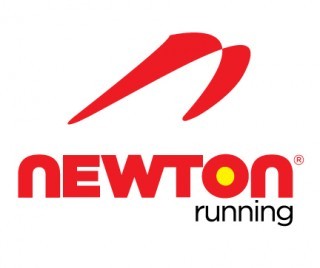
Boulder, Colo.-based Newton Running got its start in 2007.
Although there are more people running in the U.S. than ever before, the running shoe business is a bit in flux right now.
The running footwear business has boomed for most of the past 10 years, but sales of new shoes have started to plateau in the past year or so, and with both small and large changes afoot in the way shoes are sold—most notably running specialty retail consolidation, more shoes being sold at big box sporting goods stores and competition from various types of online sales (including greatly reduced close-out models)—most brands have been forced to re-examine every aspect of how they do business.
Newton Running is among the many brands that has had to make adjustments, recently eliminating numerous positions and rethinking its sales strategy. But, despite those big changes over the past few weeks, Newton is not going out of business and is not for sale, but it is moving full speed ahead into 2016. That comes straight from president Craig Heisner, who insists the brand can operate profitably after restructuring and refocusing its business.
On Oct. 14, the company let go of 14 people from its Boulder, Colo., headquarters and its sales and tech rep force around the U.S., leaving it with a full-time staff of about 25 people.
“Obviously, there are a lot of rumors to dispel. We’re not being sold, we’re not going out of business,” Heisner told Competitor.com. “We’re not going away and the business is certainly not folding. We’re shipping product. We didn’t terminate our entire sales force or the organization here in Boulder. It’s really about focusing our efforts and getting costs in line with revenues and continuing to do the great things we’ve been doing.”
Heisner said Newton will continue to support on its key specialty retail partners across the country, but he said it will also make an effort to re-focus on its best-performing regions. The company is also in the process of securing new manufacturing facilities in East Asia, Heisner said, adding that the delivery of its 2016 line of shoes—which includes a major update to its flagship Gravity model—will be on schedule and unchanged.
Although the brand will still sell directly through its own website as every other brand does, Newton will continue to service its vendor partners with a combination of its own field reps and its in-house sales team, Heisner said.
“That’s not to say we’ll be walking away from business in any market, it’s just that the servicing focus will be in our key markets,” Heisner said. “If there is a retailer that lies outside of one of our key markets, we’re still going to visit them and develop programs for them.”
Newton isn’t the only brand that has made changes. In 2013, K-Swiss, after five years of a strong push into running, eliminated its running shoe business entirely when it was sold to a Korean multinational corporation. Last year, Patagonia also terminated its athletic footwear business after eight years (which included trail running and hiking shoes) when Wolverine Worldwide ended its manufacturing and licensing agreement because of a lack of profitability.
Most recently, Hoka One One has reorganized its central operations under its parent company Deckers Inc., in Goleta, Calif., and closed its Richmond, Calif., brand headquarters. Plus, upstart brand Ampla was folded in September when Quiksilver Inc., the parent company of the innovative brand, filed for Chapter 11 bankruptcy protection and announced a financial restructuring strategy.
Newton Running made a big splash when running gait guru Danny Abshire and investor Jerry Lee launched its first line of lightweight running shoes based on a unique forefoot lug technology aimed at putting more energy return into a runner’s stride. Since its inception, Newton has made one of its primary objectives to help runners run more efficiently with better form and gained traction as an upstart running brand at a time when lightweight, minimalist shoes and a sport-wide re-examination of running form went mainstream in about 2008. Along the way, the brand developed a passionate core customer base among triathletes and runners, perhaps unlike any other current brand.
Amid a handful of challenges that have thwarted the brand’s growth, Boston-based Fireman Capital Partners, one of Newton’s principal shareholders since 2013, has taken more control of the brand in recent months. The company made huge headway in its first six years with its brightly colored running shoes featuring Action/Reaction Technology and its stated ambition of helping runners improve their running mechanics, but its revenue plateaued amid slower growth, distribution and manufacturing challenges and increased competition in the marketplace.
A small staff remains at Newton’s new headquarters inside the company’s warehouse and shipping building in Boulder, including CEO Joe O’Neil, sales director Tom Curran and director of events, Yo Schmidt. Abshire also remains with the brand in the company’s retail store on Boulder’s Pearl Street mall. In August, the company vacated its downtown Boulder headquarters—a building owned by Lee’s real estate company—and moved to an office inside a renovated section of the brand’s warehouse across town.
Of the employees that were released on Oct. 14, several had been with the company for several years.
“Quite frankly, the restructure of the organization that took place a couple of days ago in part is about putting our cost structure in line with our revenue plans,” Heisner said. “But I think most importantly, it aligns our strategy for the business back to our core roots of staying unique and not trying to be all things to everybody and focusing on key markets with field sales representation in those markets at the expense of trying to be spread out all over the place. Consequently, it results in some positions being eliminated, and that’s never fun, but it puts us in a place where we can be profitable and service our accounts and stay true to who we are.”
After bursting onto the scene in 2007 through triathlon race expos and direct-to-consumer online sales, Newton started to forge its way into running specialty stores. It sponsored races, developed an elite racing team and became the running footwear sponsor of the Ironman triathlon series. Many industry insiders credit Newton with being a market catalyst for lighter shoes, running gait education and analysis, bright colors shoes and, of course, forefoot technology and how runners think about their form.
But the company struggled to maintain its initial momentum and retail growth. It also endured a leadership merry-go-round that included four different people leading the brand over the span of about four years—Lee, Stephen Gartside, Keith Simmons and Heisner. In the interim, it also changed its messaging about its original midfoot/forefoot running technique and reduced some of its its running education programs.
On Oct. 1, the company announced it was replacing Lee, the brand’s co-founder and longtime CEO, with O’Neil, an athletic footwear industry veteran appointed by the Fireman financial group. Heisner reiterated that Lee will remain active in the business as the company’s chairman. Prior to Lee’s departure, he owned 51 percent of the company, while Fireman held about 20 percent.
RELATED: Newton Tabs Joe O’Neil as New CEO
O’Neil has more than 30 years of experience in the athletic footwear industry, most recently as senior vice president of Quiksilver Inc.-owned footwear brand DC Shoes. He has previously worked in leadership roles for Puma, adidas, Reebok and Nike. Prior to being at Newton, Heisner was an executive with Li-Ning, Brooks, Reebok and Nike.
“We’re putting the right people in the right places. I think we’re all optimistic,” Heisner said. “It’s an emotional time to deal with this. Jerry has been the heart and soul of the organization since its inception and him deciding to step aside is just something people have to accept and recognize that it changes things a little bit. But the culture of the organization remains consistent.”
Still, business was booming for Newton two and a half years ago when Fireman Capital Partners, the investment firm led by former Reebok chairman, president and CEO Paul Fireman, made a $20 million minority share investment in the brand and appointed Heisner as president. Newton appeared to be thriving last year, when it was considering partnering with Stryd to create the world’s first advanced tech running shoe that could give a runner technical gait analysis and power usage feedback in real time.
As the two brands quietly worked on the shoe, Samsung Electronics, a multinational brand headquartered in South Korea, was courting the company to possibly invest in it or purchase it. But Newton opted not to continue to collaborate with Stryd on the tech shoe and talks with Samsung dried up. Stryd has since launched the first power meter for runners on its own with the help of a Kickstarter campaign and private investors.
Heisner said Newton Running can thrive if it focuses on its core consumers and doesn’t try to spread itself too thin.
“We went a little too broad with our coverage and just need to get back in line and ensure that nothing is compromised going forward. I feel pretty good about it,” he said. “Obviously it’s never easy to go through these types of things, especially when you have a strong culture like Newton does and you’re a small organization like we are. We’ll have to work through it and get things on track for 2016 and beyond.”
The post Newton Running Restructuring, Looks To The Future appeared first on Competitor.com.
Salomon Running TV: Fast and Light

The critically acclaimed Salomon Running TV series wrapped up its 2015 season with “Fast and Light” about the sport of skyrunning through the eyes of the pioneers who helped revolutionize the sport and send it worldwide—including Kilian Jornet, Marino Giacometti, Bruno Brunod and Fabio Meraldi.
RELATED: Salomon Running TV: Kroger’s Canteen
The post Salomon Running TV: Fast and Light appeared first on Competitor.com.
9 Events to Attend During NYC Marathon Week

Photo: Courtesy of NYRR
When people think of the New York City Marathon, they think of tens of thousands of runners racing through the streets on Sunday morning, spectators with signs in hand cheering them on, and the bliss of a well-deserved, post-race Sunday brunch. But as attendance in the world’s biggest race has ballooned, so too has the schedule of events surrounding it.
Here’s a look at some key events on the race week calendar:
Marathon Expo
Located on the far west side of Manhattan at the Jacob K. Javits Convention Center, it’s where runners can pick up their bib number, take a pre-race selfie, and load up on free samples of granola bars, shakes and other goodies. If you forgot to pack that extra layer of running goop, plenty of options will be for sale here, as well as all sorts of demonstrations and promotions from running-focused companies big and small. Volunteers and race experts are on hand to answer any questions about logistics, other races throughout the year or updates on weather or operations on race day. New York City Mayor Bill de Blasio and Police Commissioner William Bratton have been known to make cameos on the expo grounds as well. Thursday and Friday, 10 a.m. to 8 p.m.; Saturday, 9 a.m. to 5 p.m. Note that on Thursday and Friday, bib number pickup closes an hour prior.
Motorcoach Tours of the Marathon Course
This is a great option for first-time runners or spectators. Buses depart at a variety of times from Thursday through Saturday, each tour lasting approximately four hours and winding from the Verrazano Bridge to the finish line in Central Park. Pre-order tickets for $45 and reserve times at Nyrr.org.
Poland Spring Marathon Kickoff
A low-key, 5-mile race on Sunday, Oct. 25, that—like the marathon in its early days—stays within the borders of Central Park. It’s a great race for locals or marathoners looking to shake off nerves the week before the main event. It won’t fill up as quickly as the marathon, but early registration on Nyrr.org is advised.
Dash to the Finish Line 5K
A 5K that takes place the day before the marathon is a great way for friends and family not running Sunday to still feel active and part of marathon weekend events. The race starts near the United Nations in East Midtown and, like the marathon, ends in Central Park. Registration for the race is procrastinator-friendly and available on Nyrr.org until 7 p.m. on Friday, Oct. 30.
Marathon Eve Dinner
Open to spectators and runners at the large tent near the finish line from 3:30 p.m. until 8 p.m., the dinner is early enough to accommodate a solid night’s sleep and digestion time. Tickets cost $35 per person and are for sale on Nyrr.org, but limited in quantity. The food is buffet style and the spread usually involves an array of pre-race carbs and proteins.
Night of Champions
This is a high-end affair at The Plaza Hotel (tickets start at $350 per person, a portion of which is tax deductible) that brings together runners to celebrate on Sunday evening. A silent auction also takes place from 7 p.m. to 9 p.m., and for $1,000 per person you can upgrade to joining a VIP cocktail hour and private patron reception to mingle with the elite runners.
Grandstand Seating
Along the east side of the finish line there is limited seating available for $75 a person. The view offers a glimpse of the last 200 meters of the race, usually where the most tears and high fives take place, and within earshot of the iconic Fred Lebow statue. Security near the finish line is extremely tight, so allow for extra time to get to your seats. One’s chances of slipping into the bleachers without a ticket in hand are about as likely as clocking a time faster than Meb Keflezighi.
Blue Line Lounge
A heated option for spectators on Marathon Sunday that includes a gourmet brunch buffet, beer, cocktails and close access to the finish line in Central Park. Tickets are $500 each, with a portion tax deductible as a donation to New York Road Runners youth and community programs.
New York Road Runners 60K
This 60K is the ultra way of saying the New York City Marathon is peanuts. The 37.2-mile course is an arguably far more tedious nine laps in Central Park and takes place two weeks after the Marathon packs up. The event is draped in far less glitz, but will similarly elicit free beers and high fives for participants.
The post 9 Events to Attend During NYC Marathon Week appeared first on Competitor.com.
Polar Introduces Strapless A360 Fitness Tracker
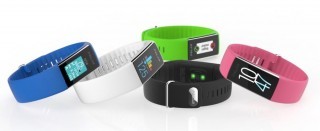
On Tuesday, Polar introduced the Polar A360 with wrist-based heart rate monitoring, the company’s first foray into 24/7 activity trackers. The waterproof A360, which will retail for $200, features heart-rate based training guidance on a high-resolution color touchscreen. Similar to other performance-minded activity trackers such as Fitbit, the Garmin vivofit 2and others , the A360 tracks daily activity, steps, calories, workouts and sleep.
Designed for fitness enthusiasts more so than competitive athletes, the A360—which does not feature GPS functionality—is aimed at users who want to track heart rate during strength training, spinning classes, treadmill running, Pilates, yoga, dance, group exercise classes and other types of gym-related activities. The company claims it will track 24/7 activity for two weeks, including one hour of training per day, before it needs to be recharged. For users who prefer a chest strap for heart-rate monitoring over wrist-based heart rate, the A360 also pairs with Polar’s H7 heart rate monitor. It comes in a variety of colored bands—Powder White, Charcoal Black, Neon Green, Sorbet Pink and Navy Blue—and is available in small, medium and large sizes.
“The key to achieving Polar’s well-known accuracy relies on how data is recorded by the sensor, and then how it is interpreted,” says Marco Suvilaakso, Global Product Director at Polar. “We developed our own algorithm for optical heart rate monitoring and optimized the hardware design to ensure the A360 meets the same accuracy and quality standards that Polar customers have come to expect.”
RELATED: The End of Chest-Worn Heart Rate Sensors?
The post Polar Introduces Strapless A360 Fitness Tracker appeared first on Competitor.com.
Ryan Hall's Blog
- Ryan Hall's profile
- 21 followers



